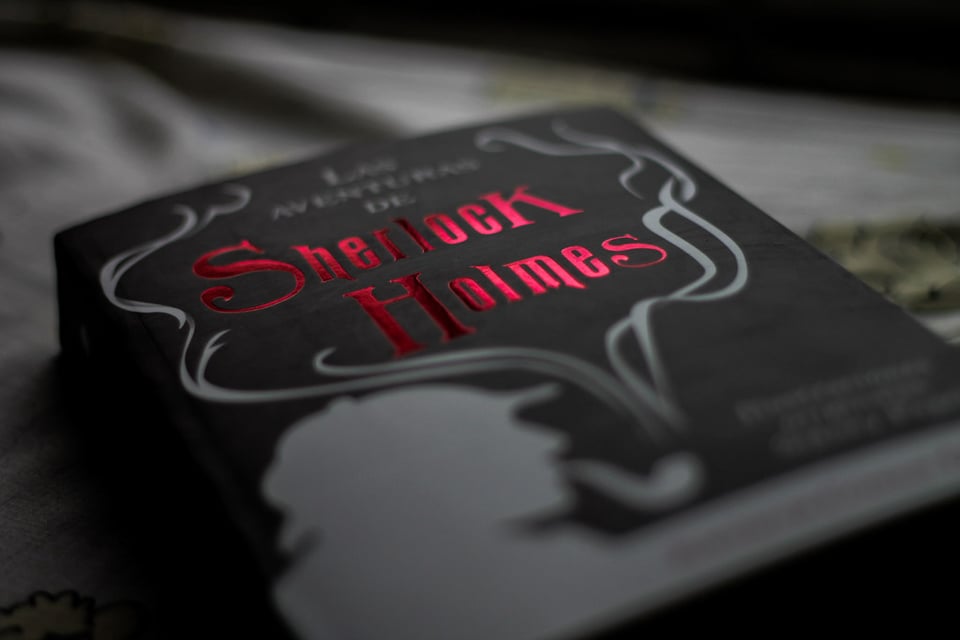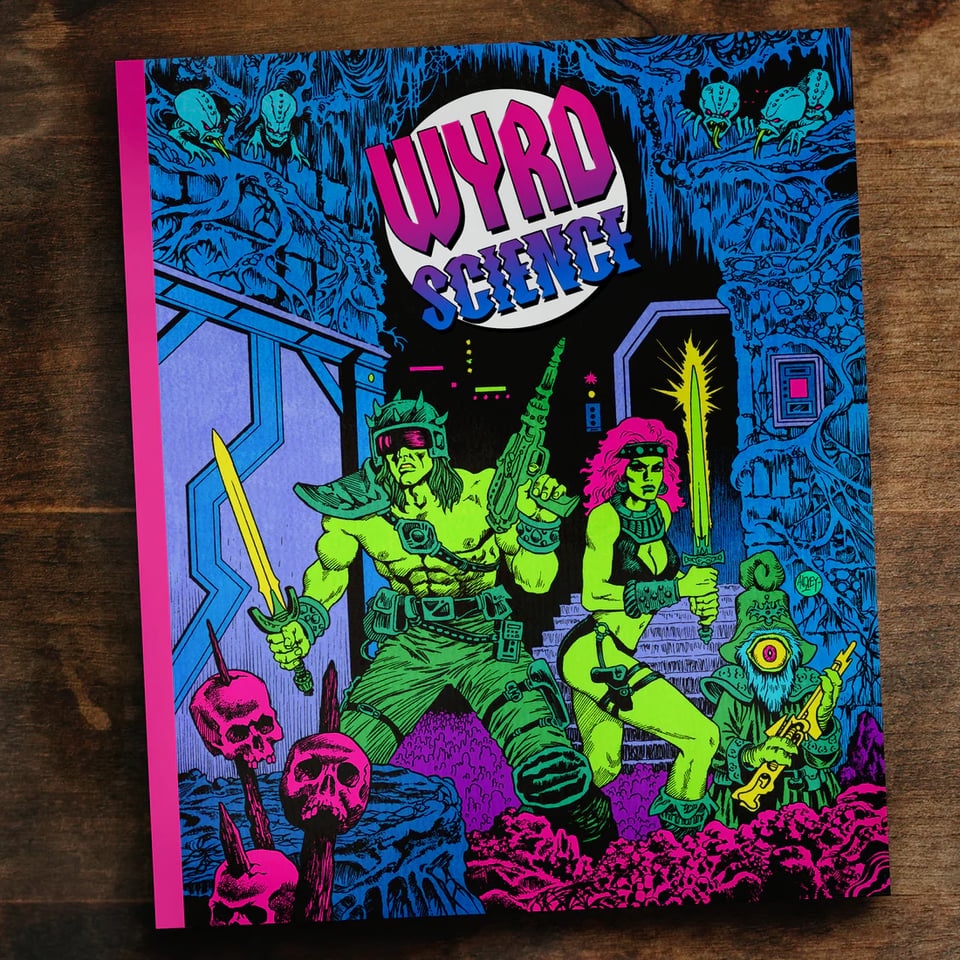Another canonical rant
Disparity between 'canon' and 'continuity' in fan discourse, a dive into Wyrd Science magazine, and September's news
(Before I get started, I’m moving an news item up to the top here to say: Welcome to Buttondown! After four years on Substack, I decided to change newsletter providers. Ideally it should be a seamless experience for previous subscribers, and if you’re a new subscriber, I made sure to migrate the old newsletters over so you can dig through the archives if you like. Anyhow, on to today’s rant newsletter.)
Those that know me or have read these newsletters for a while are aware I'm rather vocal against the tendency of fan communities to enshrine canon as some kind of objective metric to enjoy something. And yet, repeatedly I find myself defending my distaste, often with people who I thought would agree with me or at least understood my perspective. The arguments for defending canon appear nonsensical to me, so I often just nod and change the subject.
Part of the problem might be that fan communities have so abused the concept of “canon” they confuse it with continuity. So let’s dig into that a bit.
Like most things in the evolution of modern fan discourse, the concept of canon comes from the Sherlock Holmes fandom. More accurately, it was a term taken from theology to describe a concept that was new at the time: the idea that certain works might share a setting and characters between them, but the authorship of said works differed. For those that don’t know, “canon” (or “sacred canon”) is a word used in theology to differentiate between books that are deemed to be genuine Holy Scriptures and those that are not genuine. There are obviously religious nuances to this I'm skipping over, but the key point is there’s an authority that determines which works are deemed “authentic” and which are not.
How this applies to fandom I thought was clear, to the point where I’ve never really articulated it: canon only matters when there are materials outside of the core text. This isn’t the same as continuity, although there’s a fair bit of overlap. To illustrate, I’ll use Sherlock Holmes examples, in honour of the origin of the term.

Let’s start with two books that are very clearly part of the Sherlock Holmes canon: A Study in Scarlet and The Sign of Four, the first two novels written by Sir Arthur Conan Doyle. In STUD, Watson mentions he has a shoulder injury from a bullet he got while in the Army:
There I was struck on the shoulder by a Jezail bullet, which shattered the bone and grazed the subclavian artery.
Yet in SIGN he says the wound is in his leg:
I made no remark, however, but sat nursing my wounded leg. I had a Jezail bullet through it some time before, and, though it did not prevent me from walking, it ached wearily at every change of the weather.
The question arises: Which is canonical?
The answer is “both.”
How? Because both options are present in the canon of original works. The error is not one of canonicity. Rather, it’s a continuity error—Doyle has forgotten where he had the wound and introduced a mistake into the continuity between books.
Here's another example: In the story “Sherlock Holmes Arrives Too Late,” Maurice Leblanc introduces Sherlock Holmes to his gentleman thief, Arséne Lupin. Due to legal pressures, in later stories Lupin meets a suspiciously similar detective named Herlock Sholmès. At what point in Holmes’ continuity did he meet Lupin?
The answer is “depends on what the reader thinks.” And this is why I hate the concept of canon.
Modern fan discourse would reject “Sherlock Holmes Arrives Too Late” because it is not canonical. That is factually accurate: It was not a story written by Doyle nor authorised by him (as evidenced by said legal threats), and thus firmly sits outside the canon of his stories. But nothing in the continuity of the Holmes stories prevents him from meeting Lupin. Further, to be blunt, all the people involved in the legal side of this are dead, as all the relevant stories are firmly in the public domain. Therefore, the only thing preventing me from enjoying this story as part of Sherlock Holmes’ life is this vague agreement we’ve come to as fans that this story somehow doesn't count.
After talking about victorian detectives for a while, let’s take the next logical step and move our gaze to Star Trek.

Last year I managed to snag a CD-Rom of Star Trek comics off eBay for an extremely reasonable price. This was made before digital comics were really established, so the disc simply has PDF scans of every page of every single Star Trek comic from its early days until around 2007. Which includes ads and, more importantly, the letters pages.
In the early 1980s, DC Comics had the license, and produced tie-in comics set during the era of the Star Trek movies (from Star Trek II: The Wrath of Khan until Star Trek VI: The Undiscovered Country, I believe). Because the comics were coming out concurrently with the movies, they were often made without any knowledge of what came next for the franchise. Star Trek novels were also coming out at a fair clip, including novelisations of said movies.
Reading the letters pages are fascinating, because it's a pre-Internet look into fan discourse of the time. And in nearly every single letters page, there's inevitably a reference to “this issue of your comic contradicts that novel.” And the response from the editors is universal: The novels are doing their own thing, and the comics are doing a different thing, but both are faithful to the movies.
The fans at the time (or at least the ones inclined to write into DC Comics with their opinions) weren't wrapping their heads around it, but what's ultimately happening is that both the novels and comics are in continuity with the movies, but cannot be reconciled with each other. They are, in effect, two different tie-in continuities that both refer to the “Holy Scripture” of the movies.
Which is why what happened around Star Wars at the same time is so fucking weird.

Around the same time as these Star Trek comics were arguing for their validity to exist in a state of semi-continuity, George Lucas took the radical approach to retroactively declare some, but not all, of the tie-in media for Star Wars to actually be canonical.
If you break this down, the step doesn't seem that radical. If George Lucas wrote a novel about Star Wars at the time he was in control of the franchise, it would generally be considered canonical. If someone else wrote a novel with George Lucas’ oversight, it would also probably be considered canonical, because it is still supported by the original creator. Ergo, it doesn’t seem that big of a stretch for the original creator to retroactively say “I deem these things to be part of the larger canon of Star Wars works.”
Hopefully you’re starting to see where the rot sets in. If a tie-in product doesn't align with the core text, that's bad continuity, because the point of tie-in products is to expand on the core text. If a tie-in product doesn't align with another tie-in product by the same tie-in creators, that's bad continuity because the second-hand creators should keep their own products straight. But if one tie-in product doesn't align with a second tie-in product by a different creative team, that's just unaligned canons. So when a creator now shows they have the ability to retroactively declare something canonical, it also means unaligned tie-in products stop being merely unaligned canons, but now bad continuity.
Disney goes a step further and does what is implicit by the ability to bestow canonical status but had thus far never been a concern, which is that canonical status can also be revoked. Now tie-in things that were in continuity are still in continuity (because that's what they should do and did do), but they've stopped having perceived value. The creator has said they will make a different continuity that retroactively contradicts previously established things.
To be clear, the works themselves are unchanged. The only thing that has changed is someone decided they’re not valid anymore. And fans, because they trusted the authority in question to determine whether something is canon or not, must now either reject the previously canonical works, or reject the authority.
I err on the side of rejecting the authority, because I don’t need an authority to tell me what to enjoy. If the original creator can introduce continuity errors and yet I can still enjoy the works, I can also enjoy works that are not in continuity with other works. I can choose to reject works with large continuity errors that I no longer find entertaining, but I don’t need an authority to make that decision for me, either.
Continuity is important and vital for long-running fictional worlds. They celebrate what came before, and reward people who have followed along, often investing large amounts of time in loving the thing you have made. Getting continuity right with the works you have control over is a vital part of being a good creator, and even though people claim we’ve gotten increasingly intolerant of these errors due to the rise of the Internet and having access to much of the media of the past, the truth is some fans have always found it unacceptable, all the way back to the late 1800s. But continuity grumbling is also a game, at its heart. Complaining about Watson’s wound is a fun discussion point with other fans, which often leads to discussions of how to imply retroactive continuity to fix such mistakes. It leads to conversations with fellow enthusiasts in a joyful celebration of stories.
When canon becomes predominate, as something more than just a way to distinguish authorship of a work, we’re letting a literal authority determine what we’re allowed to enjoy. It’s too much of a stretch to call it authoritarianism (especially when there’s so much of that in the real world right now), but I‘m increasingly intolerant of dismissing someone’s joy with a curt “that's not canon.”
So yes, as far as I am concerned, Holmes fought against Lupin several times, and after Maurice Leblanc published two such memoirs, Watson threatened legal action against Leblanc, who cheekily hid his rival’s identity under the implausible pseudonym “Herlock Sholmès.” It's not canonical, but it’s far more entertaining than the alternative.
News
Enough of yelling at clouds. I have some news to share!
First off, I got a chance to once again work with my friends at Extra Credits on a script for a video. This time, I talked about the issues with board games right now. (Spoiler: It’s not just tariffs.) Check it out, and give it a thumbs up!
I’ve also been working on some monsters for the Savage Worlds: Scarred Lands setting. I got to work on the Gauntling and the Flailing Dreadnought. I worked on the updated Scarred Lands setting about a decade ago, so it was fun to come back to it!
Rolling Boxcars did a very nice review of Tales of the Red: Hope Reborn. Here’s an excerpt regarding my adventure, “The Angel’s Share”:
The Edgerunners are hired by the owners of the Forlorn Hope, a well-known Edgerunner bar in Night City. A patron who frequents the place has been selling XBD braindance chips with all the safeties removed. XBD braindance chips are not allowed to be sold in the Forlorn Hope, and its dealer has been evicted from the premises on multiple occasions but doesn’t seem to be getting the message that he isn’t wanted. The owners of the Forlorn Hope would like the Edgerunners to locate his facilities and smash his equipment—putting him out of business. It’s a straightforward job, but that is not all. The mission heats up just as the Edgerunners let down their guard.
Finally, the Masks of Nyarlethotep campaign on Red Moon Roleplaying continues. Here are the next five episodes!
My Media
Wow, my rant took up a lot of space this month, so I’ll just quickly cover what I’m into right now, which is Wyrd Science.

Relatively recently I was lamenting that there were no real independent RPG magazines anymore that weren’t some form of “here’s some content for the Old-School Renaissance.” Don’t get me wrong, I like OSR just fine, but I didn’t read RPG magazines in the 90s for monsters, adventures, or rules. (With the exception of Dragon Magazine’s Marvel-Phile.) No, I prefered the interviews, reviews, and critical analysis.
So recently, I stumbled across the fact that Wyrd Magazine, a UK-based concern, was running a deal on four of their back issues for £25. That seems like a ridiculously good deal (each issue is normally £10), and I want to support more UK-based artists and publishers, so I took a chance, and I haven’t regretted it since.
It’s exactly what I was wanting, all wrapped up as a 100-plus page full-colour bookazine. An issue might have an article about something relatively mainstream like Warhammer Fantasy Roleplay, as well as a retrospective on a specific slice of gaming history, and an interview with a gaming store owner in Berlin. It’s unapologetically eclectic.
Since I got the issues, I’ve kept one at my work desk so every time I take a break I can read a few pages before going back to work. It’s been a perfect palette cleanser while still keeping my brain in a work-adjacent headspace. I went ahead and got a subscription as well (although, admittedly, they put out issues only once or twice a year, so it’s hardly breaking the bank.) I highly recommend it.
And that’s it for this month. See you in October!
